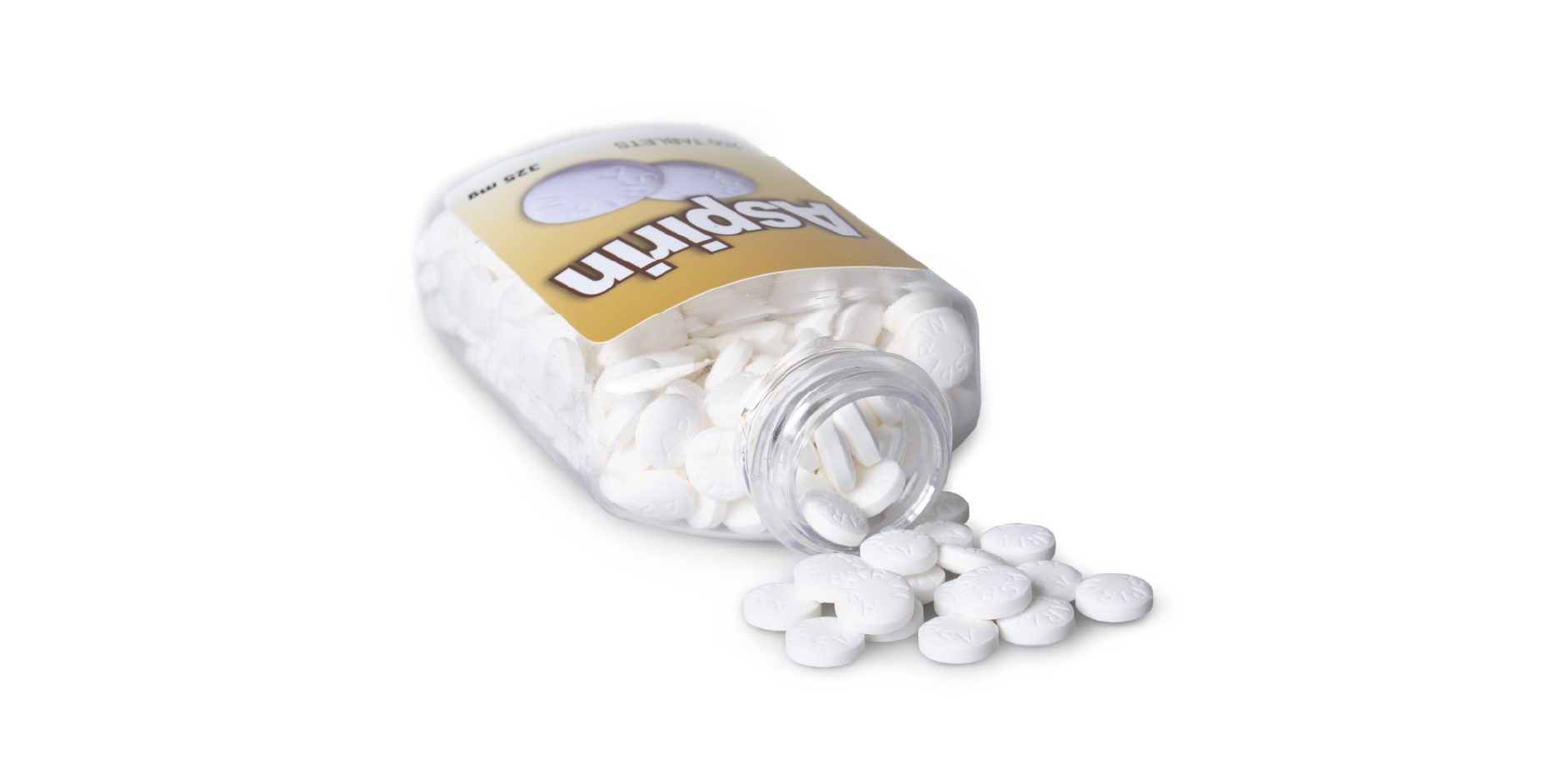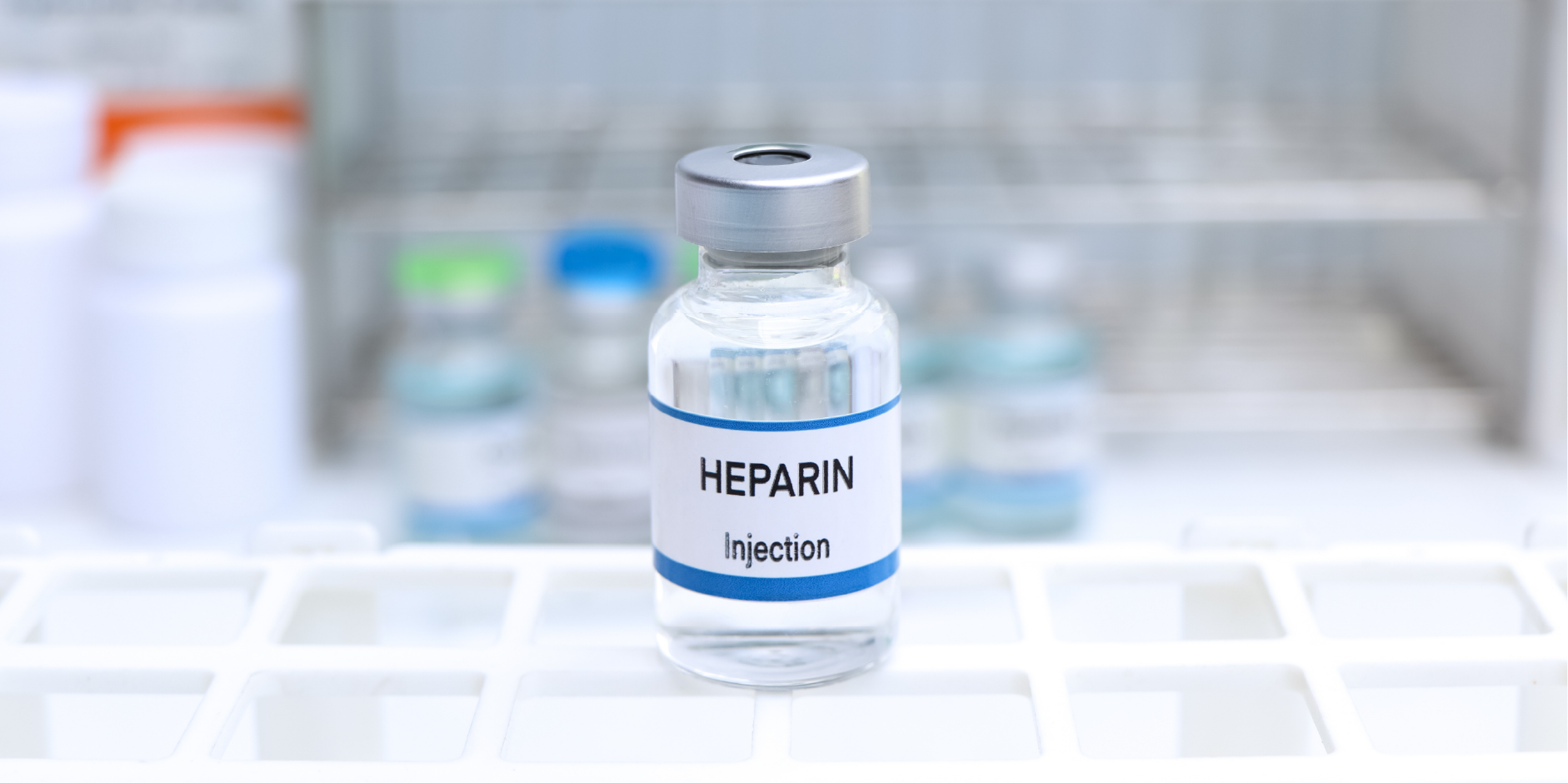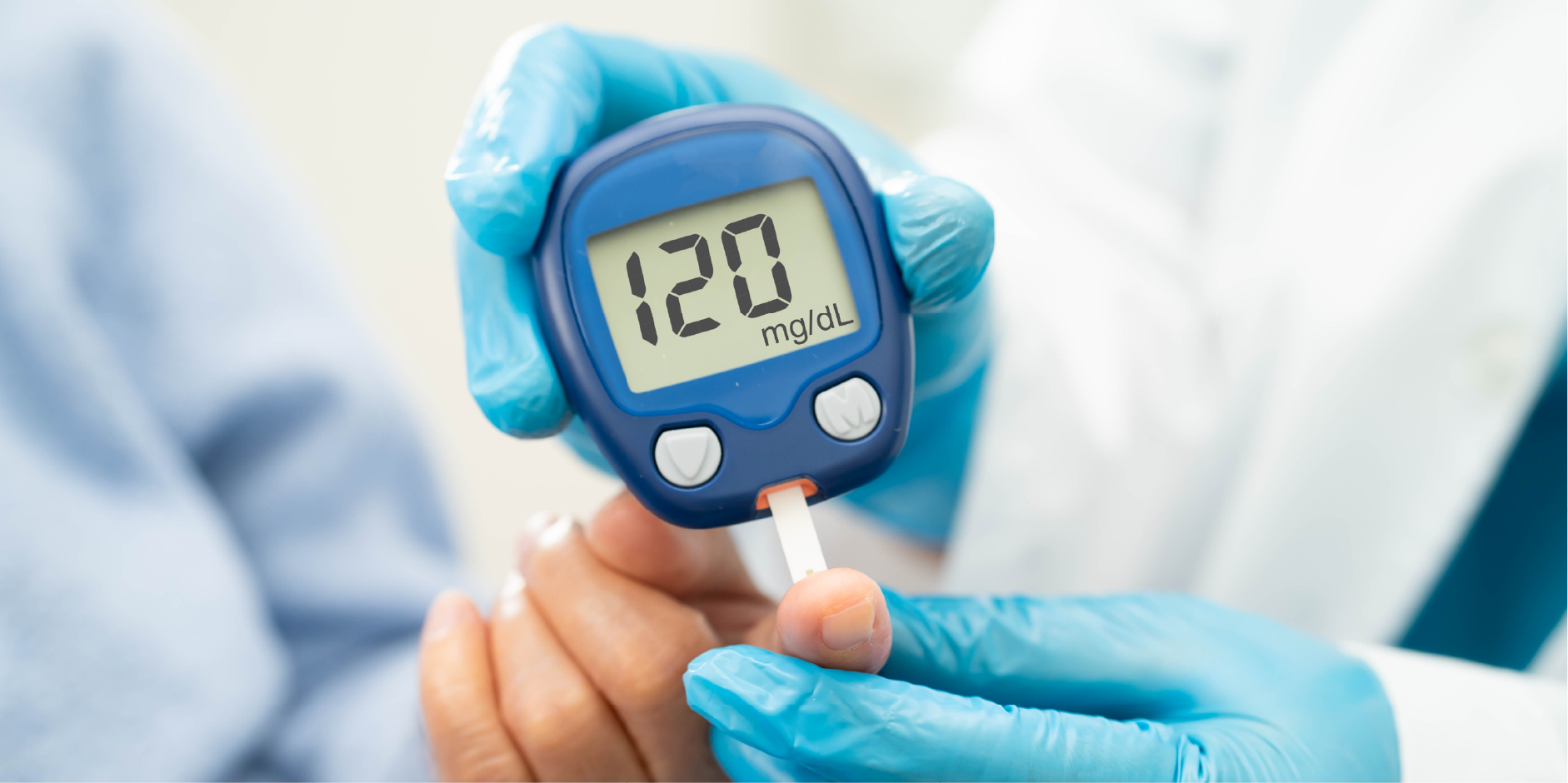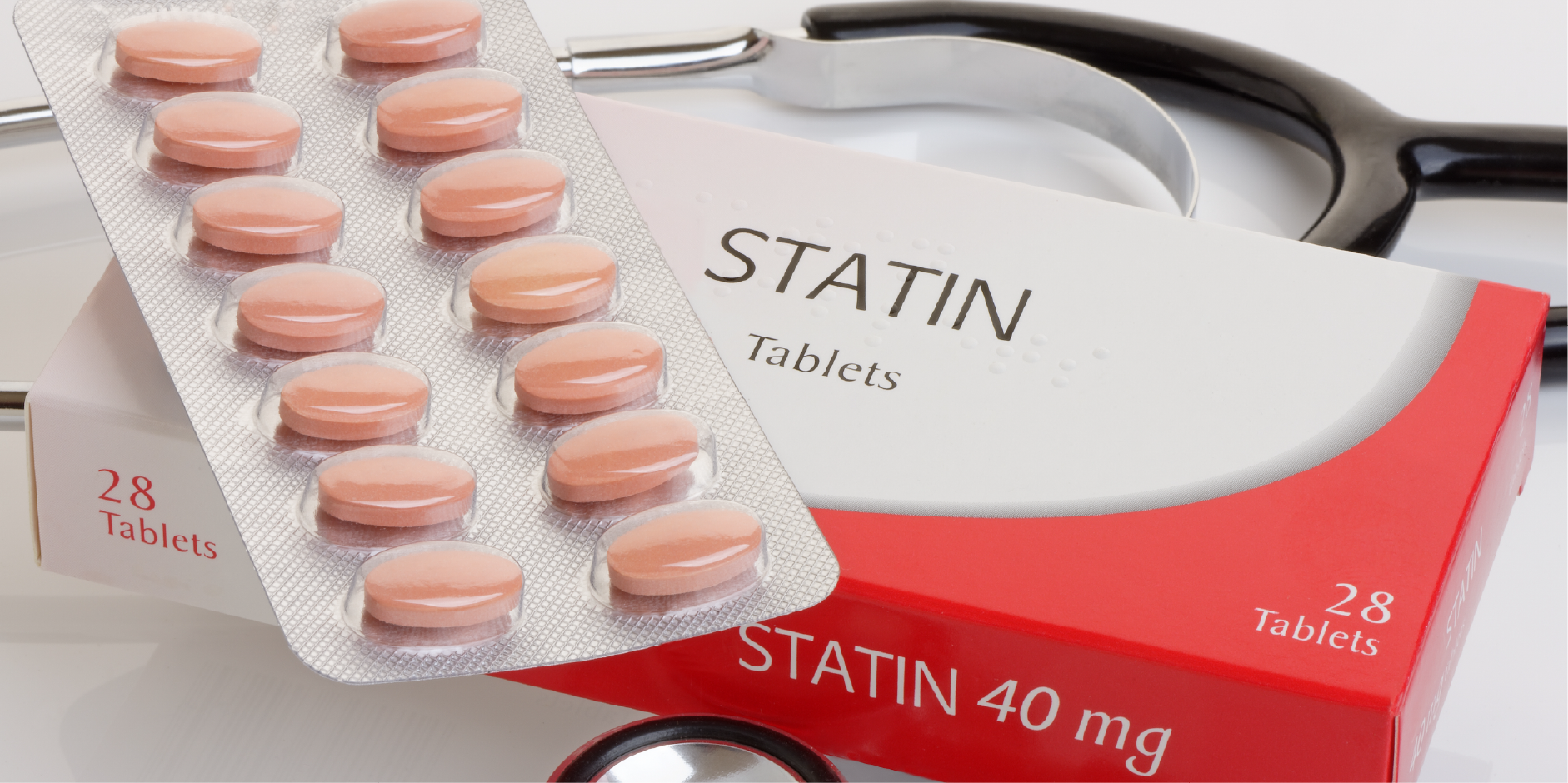Nội dung của trang này:
Nội dung của trang này:
Đánh giá
Conditions for Intravenous rt-PA Administration
There should be a physician and staff with expertise in acute stroke
management, in delivering thrombolysis, and in monitoring for complications.
There should be immediate access to high-resolution imaging (eg non-contrast CT
scan) facilities that are available 24 hours/day and staff trained and
experienced in interpreting the results. The facility has the means to treat
potential complications (eg intracerebral hemorrhage) and intravenous rt-PA is
given only to patients satisfying specific inclusion and exclusion criteria.
 Ischemic Stroke_Management 1
Ischemic Stroke_Management 1Patient Inclusion Criteria
- Patients within 3-4.5 hours of acute ischemic stroke symptom onset or last known well or baseline state
- Ischemic stroke with measurable neurological deficit by clinical assessment confirmed through neuroimaging and shows no signs of hemorrhage
- Medically eligible patients ≥18 years of age
- Mild with disabling stroke symptoms to severe stroke symptoms
- Known case of sickle cell disease, diabetes mellitus (DM) or prior stroke presenting with acute ischemic stroke
- Patients with blood pressures (BP) that can be lowered safely to <185/110 mmHg with antihypertensive agents
- Patients with a history of a small number (1-10) of cerebral microbleeds demonstrated on magnetic resonance imaging
- Initial glucose levels >50 mg/dL
Patient Exclusion Criteria
Absolute Contraindications
- Onset of stroke >4.5 hours prior to planned start of treatment
- Neurologic deficit is minor or spontaneously and rapidly improving
- Symptoms of stroke suggestive of subarachnoid hemorrhage, regardless of CT result
- Hypertension: Systolic blood pressure (SBP) >185 mmHg and diastolic blood pressure (DBP) >110 mmHg on repeated measurements despite aggressive treatment to lower blood pressure
- In the setting of middle cerebral artery (MCA) stroke, an obtunded or comatose state may be a relative contraindication
- Signs of active internal bleeding or acute trauma (ie fracture) on examination
- Mild non-disabling stroke symptoms (NIHSS score 0-5) that can be treated within 3 and 4.5 hours of ischemic stroke symptom onset or last known well or baseline state
- Major surgery (eg recent intracranial or spinal surgery) within 3 months or serious trauma within the last 2 weeks
- History of or current intracranial hemorrhage
- Prior stroke or serious head injury in the preceding 3 months
- Gastrointestinal or urinary tract hemorrhage within 21 days
- Structural gastrointestinal malignancy
- Infective endocarditis
- Arterial puncture at a non-compressible site within the preceding 7 days or lumbar puncture within the last 3 days
- Untreated cerebral aneurysm, arteriovenous malformation (AVM) or brain tumor
- Clinical presentation suggestive of post-myocardial infarction (MI) pericarditis
- Patient is taking oral anticoagulants (eg Warfarin) and with INR >1.7 or PT >15 seconds
- Direct thrombin inhibitors or direct factor Xa inhibitors: This may be re-evaluated if lab tests (eg aPTT, INR, platelet count) are normal or if last dose of these agents was taken >48 hours in patients with normal renal function
- Patient has received Heparin within the last 48 hours and has an elevated aPTT greater than the upper limit of normal
- Patient has received low-molecular-weight Heparin (LMWH) within the last 24 hours
- Known hereditary or acquired hemorrhagic diathesis or unsupported coagulation factor deficiency
- Known case or suspected case of aortic arch dissection
- Platelet count <100,000 mm3
- INR >1.7 and elevated aPTT (>1.5x normal)
- Positive pregnancy test
- Intracranial hemorrhage
- Large area of low attenuation consistent with an infarcted brain (time of symptom onset may have been earlier)
- Intracranial tumor, aneurysm, AVM or other space-occupying lesion
Relative Contraindications
- Seizure at stroke onset
- Pregnancy or possible pregnancy
- More than 10 cerebral microbleeds on MRI
- Acute myocardial infarction occurred in the past 3 months is a ST-elevation myocardial infarction (STEMI) involving the left anterior myocardium
- History of gastrointestinal or genitourinary bleeding
Pharmacological therapy
Blood Pressure Management
An elevated blood pressure is a major risk factor for both first and
subsequent strokes. Both elevated and low blood pressures are associated with
poor outcomes in acute ischemic stroke. Mild and moderately elevated blood
pressure should not be routinely lowered in the acute phase of stroke, as this
may worsen outcomes. A rapid or excessive blood pressure reduction can
compromise cerebral perfusion and should be avoided. Hypotension and
hypovolemia should be corrected in order to maintain systemic perfusion levels
that are essential to organ function. Elevated blood pressure in stroke may be
due to the stress of a cerebrovascular event, a full bladder, nausea, pain,
preexisting hypertension, a physiological response to increased intracranial
pressure or hypoxia. An elevated blood pressure usually resolves spontaneously
within the first few days after a stroke. Excessively high blood pressure is
lowered to decrease brain edema formation, reduce the risk of hemorrhagic
transformation of the infarct, prevent further vascular damage, and preclude
early recurrent stroke.
 Ischemic Stroke_Management 2
Ischemic Stroke_Management 2Non-rt-PA Patients
The benefit of initiating or re-initiating antihypertensive treatment within the first 48-72 hours is less clear in patients with SBP ≥220 mmHg or DBP ≥120 mmHg or mean arterial pressure (MAP) >130, without comorbid conditions requiring urgent antihypertensive therapy and who did not receive rt-PA or mechanical thrombectomy. Consider lowering blood pressure by 10-15% during the first 24 hours after the onset of stroke. If blood pressure is <220/120 mmHg, refrain from lowering blood pressure during the first 72 hours after stroke. Starting or restarting antihypertensive medications during hospitalization in neurologically stable patients with blood pressure of ≥140/90 mmHg >72 hours after stroke is recommended to improve long-term blood pressure control unless otherwise indicated.
| Blood Pressure (mmHg) | Treatment |
| SBP ≥220 mmHg or DBP 121-140 mmHg | Labetalol: 10-20 mg IV over 1-2 minutes
May repeat or double the dose every 10 minutes Max dose: 300 mg in 24 hours or Nicardipine: Initially, 5 mg/hr IV infusion; titrate to desired effect by increasing 2.5 mg/hr every 5 minutes Max dose: 15 mg/hr (Aim for 10-15% decrease in blood pressure) |
Pre-thrombolytic Therapy
Blood pressure management of patients eligible for thrombolysis is
critical before and during the administration of rt-PA and during the ensuing
24 hours because severely elevated blood pressure is associated with
parenchymal hemorrhage. Thrombolysis is not performed in patients with SBP
>185 mmHg or DBP >110 mmHg at the time of treatment.
Correct blood pressure using the following:
| Blood Pressure (mmHg) | Treatment |
| SBP >185 mmHg or DBP >110 mmHg | Labetalol: 10-20 mg IV over 1-2 minutes; may repeat once or Nicardipine: 5 mg/hr IV infusion; titrate up to desired effect by 2.5 mg/hr at 5- to 15-minute intervals Max dose: 15 mg/hr When desired blood pressure is attained, adjust to maintain proper blood pressure level or Clevidipine: 1-2 mg/hr IV, titrate by doubling the dose every 2-5 minutes until desired blood pressure is reached Max dose: 21 mg/hr or Other agents (eg Hydralazine, Enalapril) |
If blood pressure is not reduced and remains >185/110 mmHg
despite treatment, DO NOT GIVE rt-PA. If medications are given to lower blood
pressure, maintain the blood pressure level below 180/105 mmHg for at least the
first 24 hours after intravenous rt-PA treatment.
During and After rt-PA Administration
Monitor blood pressure every 15 minutes for 2 hours from the start
of rt-PA therapy, then every 30 minutes for 6 hours, then every hour for the
next 16 hours.
| Blood Pressure (mmHg) | Treatment |
| SBP >180-230 mmHg or DBP >105-120 mmHg |
Labetalol: 5-10 mg IV followed by continuous IV infusion at 2-8 mg/min or |
| SBP >230 mmHg or DBP 121-140 mmHg | Labetalol: 10-20 mg IV over 2 minutes; may repeat every 10-20 minutes Max dose: 300 mg in 24 hours or Labetalol: 10 mg IV followed by continuous IV infusion at 2-8 mg/min Max dose: 300 mg in 24 hours or Nicardipine: 5 mg/hr IV infusion initially, then titrate to desired effect by 2.5 mg/hr every 5-15 minutes Max dose: 15 mg/hr or Clevidipine: 1-2 mg/hr IV then titrate by doubling the dose every 2-5 minutes until desired blood pressure Max dose: 21 mg/hr |
If blood pressure is not controlled or DBP >140 mmHg, consider
Sodium nitroprusside infusion at 0.5 mcg/kg/min (max dose: 10 mcg/kg/min). If
medications are given to lower blood pressure, maintain the blood pressure
level below 180/105 mmHg for at least the first 24 hours after intravenous
rt-PA treatment.
Thrombolysis
Intravenous Thrombolysis with Recombinant Tissue Plasminogen
Activator (rt-PA)
Alteplase is a thrombolytic proven effective in the treatment of acute
ischemic stroke to be administered ideally within 60 minutes of arrival of
qualified patients. Tenecteplase is a modified version of Alteplase which is
more fibrin-specific, with a longer duration of action. This was recently
approved by the US FDA for use in the treatment of acute ischemic stroke. Tenecteplase
showed similar functional outcomes when compared to Alteplase. This is
associated with reduced non-cerebral bleeding and the need for blood
transfusion. This is given as a single intravenous bolus, it offers logistical
advantages, especially in urgent or resource-limited settings. Studies have
demonstrated non-inferiority or potential superiority to Alteplase in specific
patient populations, particularly those with large vessel occlusions. Patients
eligible for rt-PA should be treated as quickly as possible within the time
window as the benefits of rt-PA diminish rapidly over time. Carefully selected
patients may have improved outcomes if treated within an extended window of 3
to 4.5 hours of stroke symptom onset. Administering within 4.5 hours of stroke
symptom recognition may be beneficial in patients with acute ischemic stroke
who awoke with stroke symptoms or have an unclear time of onset >4.5 hours
from last known well or at baseline state and who have MRI DWI-FLAIR mismatch
(DW-MRI lesion smaller than ⅓ of the MCA territory and no visible signal change
on FLAIR). Studies have shown Tenecteplase may be superior compared to rt-PA when
given within 4.5 hours of onset of symptoms in patients with proven large
artery occlusion prior to planned thrombectomy. This may be beneficial in
patients with acute ischemic stroke who had wake-up stroke, who had CT or MRI
core/perfusion mismatch within 9 hours from the midpoint of sleep and for whom
mechanical thrombectomy is neither indicated nor planned.
 Ischemic Stroke_Management 3
Ischemic Stroke_Management 3The standard rt-PA dose (0.9 mg/kg) is recommended over low-dose rt-PA (<0.9 mg/kg) in patients with acute ischemic stroke within 4.5 hours from symptom onset. Intracranial hemorrhage can occur with use; however, risk can be reduced by careful selection of patients and presence of competent ancillary care. The signs and symptoms of intracranial hemorrhage following rt-PA include new headache, acute neurological deterioration, acute hypertension, and nausea, or vomiting. Should intracranial hemorrhage be suspected, discontinue rt-PA and do an immediate non-contrast CT scan or other neuroimaging tests to detect hemorrhage. Angioedema is also a potential side effect, which may cause partial airway obstruction. Measure the blood pressure and assess neurological status every 15 minutes during and after intravenous rt-PA infusion for 2 hours, then every 30 minutes for 6 hours, then hourly until 24 hours after intravenous rt-PA treatment. A blood pressure of <180/105 mmHg should be maintained for at least 24 hours after intravenous rt-PA. Obtain follow-up CT or MRI at 24 hours after intravenous rt-PA before starting anticoagulants or antiplatelet agents. This should be administered with or without multimodal CT, MRI and perfusion imaging. This should be administered if the patient is eligible even if mechanical thrombectomy is being considered. This should not be administered to patients with acute ischemic stroke while on direct oral anticoagulants except for Dabigatran with normal PT and aPTT results.
OTHER THERAPEUTIC MEASURES
Antiplatelet Agents
Aspirin
 Ischemic Stroke_Management 4
Ischemic Stroke_Management 4Aspirin is administered at a dose of 160-325 mg PO to most stroke patients and those who are not candidates for rt-PA within 24-48 hours of stroke onset to prevent early recurrence, mortality and morbidity. For patients treated with rt-PA, Aspirin should not be given within 24 hours after the start of rt-PA therapy, though this might be considered if with concomitant conditions for which such treatment given without rt-PA is known to provide significant benefit or not giving such treatment is known to result in significant risk. This is contraindicated in patients with Aspirin allergy or suffering from gastrointestinal bleeding. Dual antiplatelet therapy with Clopidogrel for 21 days in minor stroke or transient ischemic attack begun within 24 hours can be beneficial for early secondary stroke prevention for up to 90 days from onset of symptoms. This should not be used as a substitute if the patient qualifies for other acute interventions (eg rt-PA).
Ticagrelor
The 2016 Acute Stroke or Transient Ischemic Attack Treated with Aspirin or Ticagrelor and Patient Outcomes (SOCRATES) trial showed that Ticagrelor was not superior to Aspirin in patients with minor stroke or transient ischemic attack. This may be considered in Aspirin-intolerant patients.
Dual Antiplatelet Therapy
Aspirin/Clopidogrel
Aspirin with Clopidogrel reduces the risk of early stroke recurrence compared to Aspirin alone. These may be given to patients with minor non-cardioembolic stroke or high-risk transient ischemic attack within 24 hours of onset.
Aspirin/Ticagrelor
Based on the Acute Stroke or Transient Ischemic Attack Treated with Ticagrelor and ASA [acetylsalicylic acid] for Prevention of Stroke and Death (THALES) trial, the combination of Aspirin with Ticagrelor reduced stroke recurrence but significantly increased major bleeding. The high cost and increased adverse events may limit their use.
Anticoagulant Agents
Heparins
Example drugs: Unfractionated Heparin (UFH), low molecular weight Heparin (LMWH) and heparinoids
 Ischemic Stroke_Management 5
Ischemic Stroke_Management 5Routine anticoagulation is not recommended. This should not be used in lieu of rt-PA for treatment of otherwise eligible patients. The administration of heparins within 24 hours of rt-PA is not recommended due to increased risk of bleeding complications. Subcutaneous (SC) UFH and LMWH may be considered for deep venous thrombosis (DVT) prophylaxis in at-risk or immobilized patients. Non-pharmacologic treatments (eg intermittent pneumatic compression devices) for DVT prevention may also be used. Graduated compression stockings (GCS) are not recommended based on trials where GCS did not significantly reduce venous thromboembolism or mortality and their use was associated with a significantly increased risk of skin breaks and other adverse events. The risk versus benefit of pharmacologic agents needs to be considered. These have not shown to decrease mortality and morbidity nor prevent stroke recurrence.
Other Agents
Edaravone
Edaravone is a free radical scavenger that demonstrated a neuroprotective effect by inhibition of vascular endothelial cell injury and amelioration of neuronal damage in ischemic brain models. In Japan, nearly half of ischemic stroke patients receive Edaravone for acute treatment. This is indicated for the improvement of neurological symptoms, disorders of activities of daily living, and functional disorders associated with acute ischemic stroke. Treatment should be initiated within 24 hours after the onset of the disease and can be continued for up to 14 days.
Intracranial Pressure Decompression
Hyperventilation is an emergency measure that can decrease intracranial pressure by 25-30% when PCO2 is decreased by 5-10 mmHg. Mannitol can be administered at a dose of 0.25-0.5 g/kg IV over 20 minutes every 6 hours. Intraventricular catheter cerebrospinal fluid (CSF) drainage is usually done if there is a presence of hydrocephalus. Surgical decompression and hemicraniectomy within 48 hours after onset of symptoms may benefit patients ≤60 years old with very large infarcts to prevent brain herniation. This may be considered in select patients who are >60 years old. Ventriculostomy and sub-occipital craniectomy may be done for patients with large cerebellar infarcts.
Seizure
The use of prophylactic anti-seizure or long-term anticonvulsant agents is not recommended in patients with one self-limiting seizure episode happening at the onset or within 24 hours post-stroke. New-onset seizures in hospitalized patients with acute stroke are treated with short-acting anti-seizure medications if episodes are not self-limiting. Monitor patients with immediate post-stroke seizure for recurrent seizure activity and treat per seizure guideline recommendations.
Nonpharmacological
Supportive Care
General
Care
Effective supportive care during the acute phase of ischemic stroke is
critical to minimize complications, support recovery and improve long-term
outcomes. This includes close monitoring, optimization of physiological
parameters, early detection and treatment of complications and timely
initiation of rehabilitation. Vital signs and neurological status should be
monitored frequently during the first 24-72 hours. Bed rest followed by
mobilization should be advised as soon as the patient’s condition is stable. Close
observation is necessary during the transition from sitting to standing because
patients may experience a worsening in neurological status upon movement to the
upright position. Early mobilization reduces the risk of major complications
(eg pneumonia, DVT, etc). Very early mobilization (<24 hours) may be harmful
and should be avoided. During the first 24 hours, passive- and full-range
motion exercises may be started for paralyzed limbs. The use of alternating-pressure
mattresses and frequent skin checks to prevent pressure injuries. Fall
precautions should be taken during mobilization.
Oxygenation
Administration
of supplementary O2 to hypoxemic stroke patients is recommended. This
is not recommended in hospitalized non-hypoxic patients with acute ischemic
stroke. The target oxygen saturation level is >94%. Provide ventilatory
support if the upper airway is threatened or the sensorium is impaired. The available
data at present do not support routine use of hyperbaric oxygen in the
management of acute ischemic stroke patients except in special cases (eg air or
fat embolism). Brief moderate hyperventilation (pCO2 target 30-34
mmHg) for patients with acute severe neurological decline from brain swelling
may be considered as a temporary measure.
Glucose
Control
 Ischemic Stroke_Management 6
Ischemic Stroke_Management 6The goal for glucose control is to achieve normoglycemia. Persistent hyperglycemia post-stroke is associated with poor outcomes. According to the American Heart Association/American Stroke Association (AHA/ASA) 2019 and American Diabetes Association (ADA) 2024 guidelines, the recommended target glucose level range in hyperglycemic patients is 7.8-10 mmol/L (140-180 mg/dL). Insulin may be considered for patients with acute ischemic stroke when the serum glucose level is >180 mg/dL and close glucose monitoring is recommended to avoid hypoglycemia. Hypoglycemia (blood glucose <3.3 mmol/L or <60 mg/dL) should be treated in patients with acute ischemic stroke.
Body Temperature
Fever in the setting of acute ischemic stroke is associated with poor neurological outcome. The source of any fever following stroke must be identified. Patients with fever should be treated with antipyretic agents and cooling blankets, if available to maintain normothermia.
Volume Expansion
Hemodilution by volume expansion is not recommended for treatment of patients with acute ischemic stroke.
Drug-Induced Hypertension
The usefulness of drug-induced hypertension among ischemic stroke patients is not well established.
Nutrition and Hydration
Malnutrition and dehydration may slow down recovery. Enteral nutrition should be initiated within 7 days of admission after an acute stroke. Intravenous fluids should be administered initially in patients with acute stroke to maintain a balanced fluid status. Avoid dextrose-containing solutions. Acute ischemic stroke patients are predominantly either euvolemic or hypovolemic at presentation. If euvolemic at presentation, start maintenance fluids (estimated at 30 mL/kg body weight). If hypovolemic at presentation, careful fluid replacement is reasonable using isotonic solutions (0.9% saline solution), with extra precaution in patients vulnerable to volume overload (eg patients with heart or renal failure).
Assess for the presence of dysphagia. A water swallowing test is warranted prior to allowing patients to eat or drink. Start nasogastric tube (NGT) feedings early within 48-72 hours in patients with signs of dysphagia, altered sensorium, or in those unable to consume sufficient quantities of food or fluids orally. In patients who cannot take solid food or liquids orally, it is reasonable to use NGT over endoscopic gastrostomy tube until 2-3 weeks after stroke onset. In conscious patients with varying degrees of dysphagia, oral feeding may progress to thickened liquids or semisolids upon careful assessment and recommendations by the rehab physician and/or speech therapist. Gradually introduce a mechanically soft, blended diet and eventually a regular diet.
Head Positioning
Adopt an individualized approach to head positioning during the acute phase. A flat head position may improve cerebral perfusion in some patients; however, current evidence is still inconclusive. Elevation of the head to >30° is beneficial for patients at risk of aspiration or with increased intracranial pressure. Tailor positioning based on the patient’s neurological, respiratory and cardiovascular status.
Phẫu thuật
Endovascular
Interventions
The
criteria for endovascular therapy with a stent retriever or mechanical clot
aspiration devices (all should be present) are a modified Rankin Scale (mRS)
score of 0 to 1 prior to stroke, causative occlusion of the internal carotid
artery or proximal MCA, age ≥18 years, NIHSS score of ≥6, Alberta Stroke
Program Early CT score (ASPECTS) of ≥6, and treatment can be initiated (groin
puncture) within 6 hours of symptom onset. In selected patients with acute
ischemic stroke with large vessel obstruction, endovascular therapy is recommended
within 24 hours from the onset of symptoms.
Patients <18 years old
with confirmed large vessel occlusion may be considered for endovascular
therapy on a case-by-case basis, especially if groin puncture can be achieved
within 6 hours. The
reduced time from symptom onset to reperfusion with endovascular therapies
produces better clinical outcomes. The reperfusion to Thrombolysis in Cerebral
Infarction (TICI) grade 2b/3 should be achieved as early as possible and within
6 hours of stroke onset. It is not required to observe patients after intravenous
rt-PA to assess for clinical response before pursuing endovascular therapy to
achieve beneficial outcomes. Endovascular therapy with intracranial
thrombectomy may be considered in patients with anterior circulation occlusion
who have contraindications for intravenous rt-PA if it can be completed within
6 hours of stroke symptom onset. This may also be considered in patients <18
years with large vessel occlusion who can tolerate a groin puncture within 6
hours of stroke symptom onset. Patients with posterior circulation (eg basilar
artery occlusion) stroke may benefit from endovascular intervention, however
its effect on other posterior occlusion sites remains uncertain.
Other
Options
Mechanical or Endovascular Thrombectomy
Mechanical
thrombectomy is recommended in patients with acute ischemic stroke within 6-16
hours of last known normal who have large vessel occlusion in the anterior
circulation and meet other DWI or CTP Assessment With Clinical Mismatch in the
Triage of Wake Up and Late Presenting Strokes Undergoing Neurointervention With
Trevo (DAWN) or Endovascular Therapy Following Imaging Evaluation for Ischemic
Stroke 3 (DEFUSE 3) eligibility criteria or acute ischemic stroke within 16-24
hours of last known normal who have large vessel occlusion in the anterior
circulation and meet other DAWN eligibility criteria. Mechanical thrombectomy
in posterior circulation stroke shows lower risk of symptomatic intracranial hemorrhage
and benefits when started beyond 6 hours after symptom onset. This is effective
as an adjunct treatment to intravenous fibrinolysis or as a treatment in
selected patients with proximal large artery occlusions with contraindications
to intravenous fibrinolysis (eg recent surgery and anticoagulant use).
Endovascular thrombectomy may be considered as treatment in eligible patients with
acute basilar artery occlusion despite the lack of a published randomized
controlled trial to date. Studies have shown that endovascular thrombectomy
within an extended time window (up to 24 hours) was beneficial in some selected
patients based on DAWN and DEFUSE 3 criteria. This requires a small infarct
core, a large penumbra and confirmation by CT perfusion or MRI DWI/perfusion-weighted
imaging (PWI) mismatch. The blood pressure should be maintained at <180/105
mmHg during and 24 hours after the procedure to avoid intracerebral hemorrhage.
Intra-arterial Thrombolysis
Intra-arterial
thrombolysis is beneficial for patients with major ischemic strokes of <6
hours duration due to middle cerebral artery (MCA) occlusion.
Intravenous Fibrinolytics
Tenecteplase
may be used as an alternative to rt-PA in patients with acute ischemic stroke
of <4.5 hours duration and without contraindications to intravenous
fibrinolysis who are eligible to undergo mechanical thrombectomy. This may be
considered as an alternative to rt-PA in patients with minor neurological
deficits and no major intracranial occlusion. Intravenous defibrinogenating
agents or intravenous fibrinolytic agents other than Alteplase and Tenecteplase
are not recommended.
REVASCULARIZATION
PROCEDURES
Carotid
Endarterectomy (CEA)
As
a primary prevention strategy, carotid endarterectomy may be considered in
asymptomatic patients with a 70-99% carotid stenosis and a procedure done by
surgeons with a morbidity/mortality rate at <3%. For secondary prevention,
it may be done in patients with a 70-99% carotid stenosis with recent ischemic
events (<180 days or within 2 weeks) without severe neurological deficit. The
procedure should be done in centers with <6% perioperative stroke and death
complication rate. This may be considered for 50-69% stenosis in select cases.
It is not recommended for carotid stenosis <50%. Antithrombotic therapy
should be continued pre- and post-surgical procedure.
Carotid
Angioplasty or Stenting (CAS)
Carotid
angioplasty or stenting is an alternative to carotid endarterectomy for
secondary prevention if surgery is inaccessible, undesirable or technically
difficult. The use of distal protection devices during the procedure and dual
antiplatelets for 4 weeks after CAS is recommended. The risk of cerebral
ischemia is increased with a complex anatomy of the aortic arch and internal
carotid artery.
Intracranial
Angioplasty and Stenting (IAS)
The role of intracranial angioplasty and stenting in acute ischemic stroke is
still unclear and needs additional studies.
Phòng ngừa
PRIMARY PREVENTION
Screening
Periodic screening for social determinants of health is recommended for
individuals ≥18 years old and at-risk stroke patients. Periodic screening of
individuals ≥18 years of age for modifiable behaviors (eg cigarette smoking,
physical inactivity, poor quality diet, sleep problems) and medical conditions
that may increase the risk of stroke is recommended to reduce the risk of
stroke. Assessment and estimation of risk for atherosclerotic cardiovascular
disease (ASCVD) (eg non-fatal myocardial infarction, non-fatal stroke, fatal
cardiovascular disease) every 1-5 years in individuals 40-79 years of age is
recommended to guide treatment and lifestyle recommendations to reduce the risk
for stroke. Screening women for conditions (eg endometriosis, premature ovarian
failure before 40 years of age, and early-onset menopause [before 45 years of
age]) which are associated with an increased risk of stroke should be
considered.
Lifestyle Modification
Diet
Consumption of a diet rich in fruits and vegetables, and low in fat
(especially saturated fat) and sodium is beneficial. Mediterranean diet is
recommended for individuals without previous cardiovascular disease and those
with high or intermediate risk of stroke. Salt substitution (75% sodium
chloride and 25% potassium chloride) can be effective in patients ≥60 years of
age with uncontrolled blood pressure (SBP ≥140 mmHg in those on
antihypertensive medication or ≥160 mmHg in those not on antihypertensive medications)
to reduce the risk of stroke.
Physical Activity
 Ischemic Stroke_Management 7
Ischemic Stroke_Management 7Screening for physical activity is recommended to estimate the risk of stroke. Regular aerobic exercise of ≥30 minutes/day or >150 minutes/week of moderate-intensity physical activity (eg brisk walking) or 75 minutes/week of vigorous-intensity physical activity (eg running, jogging), on most days of the week, depending on the patient’s level of fitness is recommended to reduce the risk of stroke. Sedentary behavior should be minimized through active counseling.
Weight Loss
Screening individuals ≥18 years of age for overweight and obesity (eg annual waist circumference and body mass index [BMI] assessment) is recommended to inform the risk of stroke. The risk of stroke increases by 10% for each 5 kg/m2 increment of BMI. The relative risk of stroke increases by 10% for each 10-cm higher waist circumference. Bariatric surgical procedures (eg gastric bypass, sleeve gastrectomy) may be considered in patients with class II obesity (BMI 35-39.9 kg/m2) to reduce the risk of stroke.
Smoking Cessation
 Ischemic Stroke_Management 8
Ischemic Stroke_Management 8Smoking is a major independent risk factor for ischemic stroke. Screening for cigarette smoking, use of other forms of tobacco, use of electronic nicotine delivery systems (eg electronic cigarettes [e-cigarettes]) and vapes, including environmental tobacco smoke exposure (secondhand smoke exposure), is recommended to inform stroke risk and to target cessation interventions. Advise the patient to quit smoking and avoid passive or environmental tobacco smoke. Smoking cessation is a significant factor in both primary and secondary prevention of stroke. Intervention initiation should be considered, which incorporates behavioral and pharmacological support.
Substance Use and Substance Disorders
Screening for substance misuse and substance use disorders (eg alcohol, amphetamine, cannabis, cocaine, opioids) is recommended to inform the risk of stroke. Recreational drug (eg cannabis, synthetic cannabinoids, cocaine, heroin, methamphetamine) users, and substance users including individuals misusing prescription drugs (eg opioids, stimulants) or alcohol should be counseled to stop or undergo treatment (eg behavioral, multimodal, pharmacological) as appropriate to reduce the risk of stroke. Heavy alcohol use is associated with increased risk of ischemic and hemorrhagic stroke. Moderate intake of alcohol is recommended for those who drink alcohol and should limit it to <1 drink/day. Behavioral techniques useful for individuals with an alcohol use disorder may include feedback on alcohol-related harm, clarification of low-risk consumption levels, benefits of intake reduction, motivational enhancement, analysis of high-risk drinking situations, coping strategies and personal reduction planning. Pharmacological treatment in individuals with an alcohol use disorder includes Acamprosate, Baclofen, Disulfiram and oral Naltrexone which may be combined with evidenced-based behavioral therapy (eg cognitive behavioral therapy, motivational enhancement therapy) for improving abstinence and heavy drinking.
Antiplatelets
Antiplatelets are recommended in patients with antiphospholipid syndrome or systemic lupus erythematosus (SLE) without a history of stroke or unprovoked venous thromboembolism (VTE) to prevent stroke. An addition of Ticagrelor to Aspirin after 12 months to up to 3 years may be considered in patients with established stable coronary artery disease and low bleeding risk to reduce the rate of ischemic stroke.
Asymptomatic Carotid Artery Stenosis
The choice of management (carotid revascularization or medical therapy) should be a shared decision-making process between patient and healthcare team and is recommended in patients with asymptomatic carotid artery stenosis >70% to reduce the risk of stroke. Carotid revascularization with intensive medical treatment may be considered in patients with low perioperative risk to reduce the risk of stroke. Treatment with a statin can be effective to reduce the risk of stroke. Annual carotid duplex ultrasound every 6-12 months may be considered in patients with carotid artery stenosis >50% to evaluate progression of disease and subsequent increased risk of stroke.
Asymptomatic Cerebral Small-Vessel Disease (CSVD)
Cerebral small-vessel disease is radiographically defined by the presence of white matter hyperintensities, recent small subcortical infarcts, lacunae of presumed vascular origin, cerebral microbleeds, enlarged perivascular spaces, and cerebral atrophy. The evaluation and management of risk factors (eg diabetes, dyslipidemia, hypertension, tobacco use) are recommended in individuals with asymptomatic CSVD including silent infarcts to reduce the risk of stroke. The use of low-dose statins may be considered in individuals with silent cerebral infarcts who do not have an indication for statin therapy according to the 2019 American College of Cardiology (ACC)/AHA guideline (eg 20-75 years of age with low-density lipoprotein cholesterol [LDL-C] >190 mg/dL [>4.9 mmol/L], with 10-year ASCVD risk ≥20% or 10-year ASCVD risk ≥7.5-<20% + ≥1 risk enhancers) to reduce the risk of stroke.
Coagulation and Inflammatory Disorders
The addition of low-dose Colchicine to intensive statin treatment may be considered in individuals with a recent myocardial infarction to reduce the risk of ischemic stroke. Prophylactic therapy with Aspirin (75-100 mg/day) to reduce the risk of stroke is recommended in the following: Patients without a history of stroke and without clinical indication for anticoagulation, with a high-risk antiphospholipid antibody (aPL) profile (eg triple-positive antiphospholipid testing [lupus anticoagulant, anticardiolipin antibody, anti-β2 glycoprotein 1] or double-positive [any combination] or isolated lupus anticoagulant or isolated persistently positive anticardiolipin antibody at medium to high titers); and patients with systemic lupus erythematosus and without a history of thrombosis or pregnancy complications and with a high-risk aPL profile. Prophylactic therapy with Aspirin (75-100 mg/day) to reduce the risk of stroke may be considered in the following: After adequate risk and benefit evaluation in non-pregnant individuals with a history of obstetric antiphospholipid syndrome; and individuals with systemic lupus erythematosus without a history of thrombosis or pregnancy complications and with a low aPL profile. Vitamin K antagonist (VKA) with a target INR of 2 to 3 is preferred over Aspirin or direct oral anticoagulants in patients with antiphospholipid syndrome with a prior history of unprovoked VTE for prevention of recurrent thrombotic events including stroke. Treatment with a statin may be considered in patients with rheumatoid arthritis to reduce major adverse cardiovascular events including stroke.
Diabetes Mellitus
Diabetes mellitus is an independent risk factor for stroke. There is a 12% higher risk of stroke for every 1% increase in HbA1c. Screening for prediabetes and diabetes in asymptomatic individuals ≥18 years of age who are overweight, obese or with ASCVD is recommended to inform the risk of stroke. The use of glucagon-like peptide-1 (GLP-1) receptor agonists is recommended in patients with diabetes mellitus and high cardiovascular risk or established cardiovascular disease and HbA1c ≥7% to reduce the risk of stroke. A more stringent blood pressure control and HbA1c targets are important to prevent stroke. The target blood pressure is <130/80 mmHg, and if tolerated, an SBP <120 mmHg.
 Ischemic Stroke_Management 9
Ischemic Stroke_Management 9Dyslipidemia
Stratify the patient's risk and follow guideline-recommended target levels and lipid-lowering therapy. Treatment with a statin is recommended to reduce the risk of a first stroke in individuals 20-75 years of age with LDL-C >190 mg/dL (>4.9 mmol/L), with 10-year ASCVD risk ≥20% or 10-year ASCVD risk ≥7.5-<20% + ≥1 risk enhancers.
Hypertension
Screening for hypertension in individuals ≥18 years of age is recommended to identify individuals at increased risk for stroke and those eligible for antihypertensive therapy. Regular blood pressure monitoring is recommended. Lifestyle modification is advised for patients with blood pressure of 130-139/80-89 mmHg and should be reassessed after 3-6 months. Cardiovascular disease risk stratification is warranted to maximize treatment regimen. Lifestyle modification and treatment with antihypertensive medications to bring blood pressure down to <130/80 mmHg is recommended in patients with stage 2 hypertension or stage 1 hypertension with a higher risk of ASCVD to prevent stroke. Angiotensin-converting enzyme (ACE) inhibitors, angiotensin receptor blockers (ARBs), calcium channel blockers, thiazide and thiazide-like diuretics are recommended as initial antihypertensive drugs to prevent stroke. Most patients will require ≥2 antihypertensive agents to achieve target blood pressure. Hypertensive elderly who are >80 years of age should be treated.
Genetic Stroke Syndromes
Smoking cessation, and treatment of hypertension and other vascular risk factors are recommended in patients with cerebral autosomal dominant arteriopathy with subcortical infarcts and leukoencephalopathy (CADASIL) to reduce the risk of incident stroke. Screening for pulmonary arteriovenous malformations in individuals with hereditary hemorrhagic telangiectasia (HHT) can be effective to identify the need for multidisciplinary assessment to manage the risk of stroke.
Migraine
Individuals who are 18-64 years of age with migraine with or without aura should be evaluated, and modification of vascular risk factors is recommended to address the elevated risk of stroke in these patients. Progestin-only or non-hormonal forms of contraception are recommended in females with migraine with aura desiring contraception to avoid the increased risk of ischemic stroke associated with combined hormonal therapy.
Obstructive Sleep Apnea (OSA)
Obstructive sleep apnea is an independent risk factor for stroke. Continuous positive airway pressure (CPAP) may be considered in patients with OSA to reduce the risk of stroke. This reduces blood pressure levels over the short term.
Sex- and Gender-Specific Factors
Endometriosis
Screening for a history of endometriosis should be considered to inform of the risk of stroke. Assessment and modification of vascular risk factors should be considered in individuals with endometriosis to reduce the risk of stroke.
Hormonal Contraception
Shared decision-making is recommended for individuals with specific stroke risk factors (eg age >35 years, hypertension, migraine with aura, tobacco use) who are considering contraception to determine the best choice of contraceptive to balance the risk of stroke from contraception and the risk of stroke with pregnancy. Lower doses of Ethinyl estradiol are recommended in individuals considering combined contraceptive hormone use to reduce the potential increased risk of stroke. Progestin-only contraception or non-hormonal contraception should be considered in individuals with specific stroke risk factors who are considering contraception to prevent the increased risk of stroke associated with estrogen-containing contraception.
Pregnancy and Long-Term Stroke Risk
 Ischemic Stroke_Management 10
Ischemic Stroke_Management 10Pregnant and postpartum patients have triple the risk of stroke compared to young adults of similar age. Screening for a history of certain adverse pregnancy outcomes (eg hypertensive disorders of pregnancy, preterm birth, gestational diabetes, placental disorders) followed by subsequent assessment and management of vascular risk is recommended to reduce the risk of stroke. Early management of chronic hypertension is recommended in patients with a history of hypertensive disorders of pregnancy or adverse pregnancy outcomes to reduce the risk of stroke. Antihypertensive therapy is recommended in pregnant or early postpartum (within 6 weeks of delivery) patients with severe hypertension (SBP ≥160 mmHg or DBP ≥110 mmHg measured twice with a 15-minute interval between measurements) to lower blood pressure to <160/110 mmHg as soon as possible to reduce the risk of fatal maternal intracerebral hemorrhage. Antihypertensive therapy to lower blood pressure to <140/90 mmHg should be considered in patients with hypertensive disorders of pregnancy including those with chronic hypertension in pregnancy to reduce the risk of pregnancy-associated stroke.
Menopause
Screening for a history of premature ovarian failure (before 40 years of age) and early menopause (before 45 years of age) is recommended to inform of the risk of stroke. Assessment and modification of vascular risk factors are recommended in women with premature ovarian failure or early menopause to minimize the increased risk of stroke.
Testosterone Use
In men aged 45-80 years with confirmed hypogonadism, testosterone therapy does not appear to increase stroke risk and may be initiated if indicated.
Transgender Health
Assessment and modification of vascular risk factors should be considered in transgender women and gender-diverse individuals taking estrogens for gender affirmation to reduce the risk of stroke.
SECONDARY PREVENTION
Secondary prevention includes interventions aimed at preventing recurrent stroke, eg healthy diet, increased physical activity, reduction/elimination of alcohol consumption and intensive medical management of vascular risk factors (hypertension, dyslipidemia, diabetes mellitus, smoking cessation).
Antiplatelets
Long-term antiplatelet therapy reduces the risk of serious vascular events (eg recurrent stroke, myocardial infarction or vascular death) following ischemic stroke or transient ischemic attack. Studies have shown that each of these antiplatelet agents are effective for secondary prevention of stroke. The choice of agent is based on relative effectiveness, patient characteristics and preferences, safety, cost, risk factors, tolerability, and potential for drug interactions. Aspirin alone, Dipyridamole plus Aspirin, or Clopidogrel alone is recommended for prevention in patients with non-cardioembolic ischemic stroke or transient ischemic attack. This is not recommended in cases of non-valvular atrial fibrillation stroke prevention.
Aspirin
Aspirin is the most widely studied antiplatelet agent. The benefits of Aspirin in the long-term preventive therapy of non-cardioembolic stroke are well established.
Aspirin/Dipyridamole
The combination of Aspirin and Dipyridamole may be superior to Aspirin alone in the secondary prevention of stroke. This is less well tolerated than Aspirin and Clopidogrel mainly because of headache.
Clopidogrel
Clopidogrel may be used as a first-line agent in patients unable to tolerate Aspirin and Dipyridamole. This is associated with fewer gastrointestinal and central nervous system events, including gastric and intracranial hemorrhage, but slightly more frequent skin rash and diarrhea are noted compared with Aspirin.
Aspirin/Clopidogrel
Aspirin and Clopidogrel combination may be used in patients with acute coronary syndrome. This has an additional efficacy compared with Aspirin monotherapy in reducing the risk of recurrent stroke in the first 90 days and does not increase the risk of hemorrhage among patients with minor ischemic stroke or transient ischemic attack within 24 hours of symptom onset when given for 21 days. This is less effective than Warfarin in stroke prevention of patients with non-valvular atrial fibrillation. This is not recommended for long-term prevention unless there is another indication such as acute coronary syndrome or the presence of coronary stent.
Cilostazol
Cilostazol is a phosphodiesterase-3 inhibitor used as one of the treatment options in patients with a history of non-cardioembolic ischemic stroke or transient ischemic attack. Some studies have shown its efficacy and safety in secondary stroke prevention among Asians with peripheral arterial disease. Cilostazol/Aspirin showed superior efficacy with no excess major bleeding in a randomized controlled trial.
Ticlopidine
Ticlopidine is shown to be effective for the prevention of vascular outcomes in patients with cerebrovascular disease. This can be an option for patients with recurrent stroke symptoms despite Aspirin use. The rates of gastrointestinal bleeding are comparable or less than with Aspirin. This is associated with thrombotic thrombocytopenic purpura, aplastic anemia, neutropenia, and agranulocytosis.
Triflusal
Triflusal has been shown to be non-inferior to Aspirin in preventing stroke/myocardial infarction/vascular death and with less risk of hemorrhagic complications. Combination with Acenocoumarol is more effective in reducing risk of stroke in patients with non-valvular atrial fibrillation with moderate to high risk of stroke than Acenocoumarol monotherapy.
Secondary Prevention in Select Patients
Oral Anticoagulants
It is reasonable to initiate oral anticoagulation within 14 days after the onset of neurological symptoms for most patients with a stroke or transient ischemic attack with low risk of hemorrhagic conversion in the setting of atrial fibrillation. These may delay initiation of oral coagulation beyond 14 days if there is a high risk for hemorrhagic conversion (eg large infarct, hemorrhagic transformation on initial imaging, uncontrolled hypertension or hemorrhagic tendency) in the setting of atrial fibrillation. These are recommended in patients with cardioembolic ischemic stroke or transient ischemic attack. These are recommended for patients with moderate- to high-risk AF-associated stroke (CHA2DS2-VASc1 score = 1 in men; CHA2DS2-VASc1 score ≥2) without recent unprovoked bleeding or intracerebral hemorrhage. These are not recommended to be started in patients with acute ischemic stroke with severe hypertension (BP ≥180/120 mmHg), with sinus rhythm or with undiagnosed bleeding.
Apixaban
Apixaban is a direct and competitive factor Xa inhibitor indicated for the prevention of first and recurrent stroke as well as systemic embolism in a patient with non-valvular atrial fibrillation. This is an alternative to Aspirin in patients with non-valvular atrial fibrillation deemed unsuitable for vitamin K antagonist with similar bleeding risk as that of Aspirin. This is an alternative to Warfarin in non-valvular atrial fibrillation patients deemed appropriate for anticoagulant therapy. A dose of 5 mg twice daily is given for those who have ≥1 additional risk factor and no more than one of the following characteristics: Age ≥80 years, weight of ≤60 kg, or serum creatinine ≥1.5 mg/dL. An above dose is more effective than Aspirin or Warfarin in patients with non-valvular atrial fibrillation with moderate risk for embolism and the risk of intracerebral hemorrhage is low. The dose is halved (2.5 mg twice daily) for those who have ≥2 of the above characteristics.
Dabigatran
Dabigatran is a direct thrombin inhibitor approved for the prevention of first and recurrent stroke and systemic thromboembolism in patients with non-valvular atrial fibrillation and at least 1 additional risk factor. This is recommended in atrial fibrillation patients who are at intermediate to high risk (CHADS2 score1 ≥1) of stroke/systemic embolism. A study conducted in >18,000 patients with atrial fibrillation showed that Dabigatran, given at a dose of 150 mg twice daily, showed lower rates of stroke or systemic embolism and less frequent intracerebral hemorrhage (but with similar rates of major bleeding) compared with Warfarin. Dabigatran given at 110 mg 2x a day had similar rates of stroke as Warfarin but with significantly less major bleeding.
1CHA2DS2-VASc score represents the individual risk for stroke based on age ≥75, presence of vascular disease and increased risk of stroke among patients with atrial fibrillation (AF).
Edoxaban
Edoxaban is a factor Xa inhibitor recommended for the prevention of first and recurrent stroke and systemic embolism in patients with non-valvular atrial fibrillation. This requires initial therapy with parenteral anticoagulants prior to starting therapy. The kidney function should be assessed prior to administration. A high creatinine clearance (CrCl) (>95 mL/min) may decrease efficacy. Sudden discontinuation increases the ischemic event risks.
Rivaroxaban
Rivaroxaban is a factor Xa inhibitor recommended for the prevention of first and recurrent stroke and systemic embolism in patients with non-valvular atrial fibrillation who are at moderate to high risk of stroke (prior history of transient ischemic attack, stroke or systemic embolization or ≥2 additional risk factors). This is as effective as Warfarin in preventing cerebral or systemic embolism in patients with non-valvular atrial fibrillation but has a lower risk of intracranial bleeding.
Vitamin K Antagonist
Vitamin K antagonist is indicated for the prevention of stroke in patients with non-valvular atrial fibrillation. A target INR of 2-3 is recommended in patients with ischemic stroke or transient ischemic attack with paroxysmal, persistent or permanent atrial fibrillation.
Warfarin
Warfarin is recommended for use in patients with atrial fibrillation, mechanical prosthetic heart valves, and/or other potential sources of cardioembolism, and also for stroke prevention in patients with non-valvular atrial fibrillation. Patients with large cardioembolic stroke may start Warfarin 2 weeks from stroke event because of the risk of hemorrhagic transformation. There is a risk of serious cerebral hemorrhage and close monitoring is required. A combination with antiplatelet therapy is not recommended for all patients after ischemic stroke or transient ischemic attack but is reasonable in patients with clinically apparent coronary artery disease.
Antihypertensive Agents
The choice of antihypertensives and target blood pressure level should be individualized. An average a reduction of 10/5 mmHg has been shown to be beneficial with reduction of stroke by 30-40%. An angiotensin-converting enzyme (ACE) inhibitor, angiotensin receptor blocker (ARB) or a thiazide diuretic helps reduce the risk of recurrent stroke in patients with hypertension. A blood pressure of >140/90 mmHg has been defined by current guidelines as a reasonable threshold to improve long-term control in neurologically stable patients. The Secondary Prevention of Small Subcortical Strokes (SPS3) trial shows the benefit of a systolic blood pressure target of <130 mmHg in reducing the rate for cerebral hemorrhage in patients with recent lacunar stroke.
Please see Hypertension disease management chart for further information.
Antihyperlipidemic Agents
Statins
 Ischemic Stroke_Management 11
Ischemic Stroke_Management 11Patients already on statins at the time of stroke should continue taking them. These are recommended to reduce the risk of stroke recurrence in patients with ischemic stroke and an LDL level of ≥2.6 mmol/L (≥100 mg/dL) without known coronary heart disease or major cardiac sources of embolism. High-intensity statins and, if needed, Ezetimibe and a proprotein convertase subtilisin/kexin Type 9 (PCSK-9) inhibitor are recommended in patients with ischemic stroke or transient ischemic attack and atherosclerotic disease to achieve a goal LDL-C of <1.8 mmol/L (<70 mg/dL) in order to decrease the risk of major cardiovascular events.
Please see Dyslipidemia disease management chart for further information.
Other Drugs
Other antihyperlipidemic agents may be administered to patients who do not tolerate statins. Patients with hypertriglyceridemia or low HDL levels may be treated with Niacin or Gemfibrozil. Fibrates should be strongly considered in patients with severe hypertriglyceridemia. Fibrates lower triglyceride levels by 30-50% and may increase HDL cholesterol. Fenofibrates are the preferred fibrates to use in combination with a statin since they have a lower risk of causing myopathy.
Antidiabetic Agents
Glucose-lowering medications with proven cardiovascular benefit (eg glucagon-like peptide-1 [GLP-1] receptor agonist, sodium-glucose co-transporter 2 [SGLT2] inhibitor) should be used to treat diabetes in patients with ischemic stroke or transient ischemic attack with diabetes to decrease the risk of major adverse cardiovascular events. Individualized hemoglobin A1c (HbA1c) targets are preferred.
Please see Diabetes Mellitus disease management chart for further information.
Smoking Cessation
Counseling with or without pharmacotherapy (eg Bupropion, Varenicline or nicotine replacement) is recommended to patients with stroke or transient ischemic attack who smoke to help them stop smoking.
Please see Smoking Cessation disease management chart for further information.
